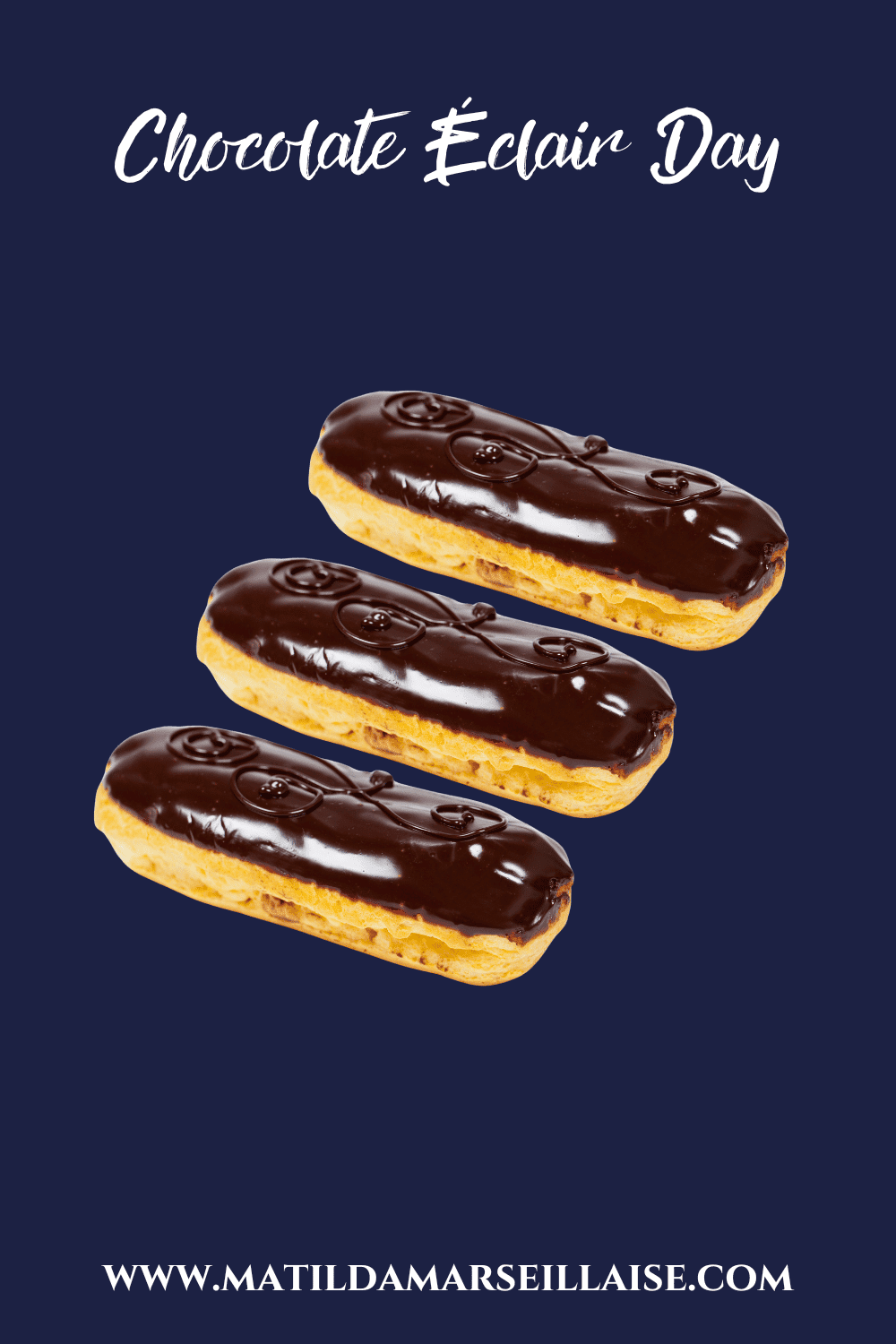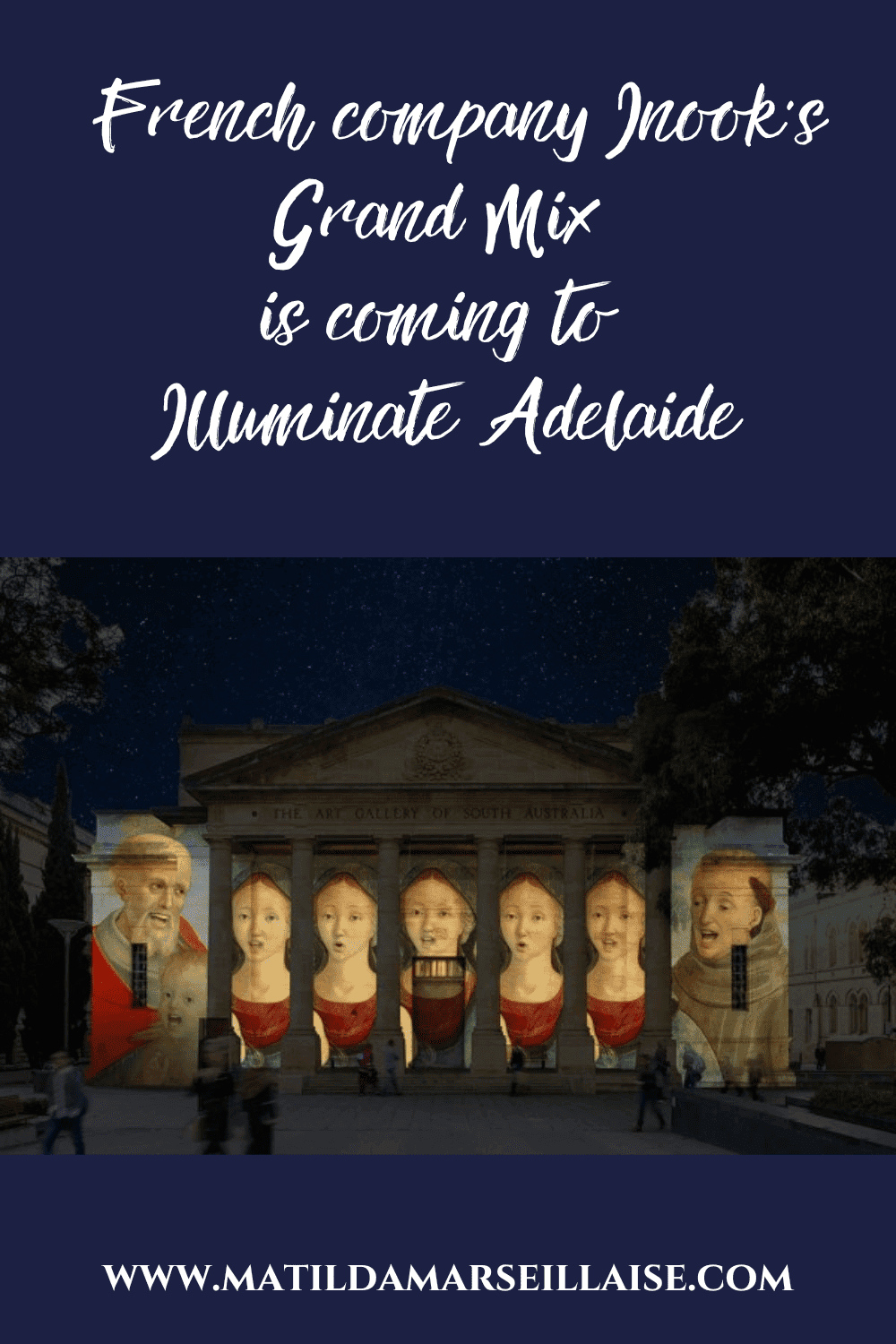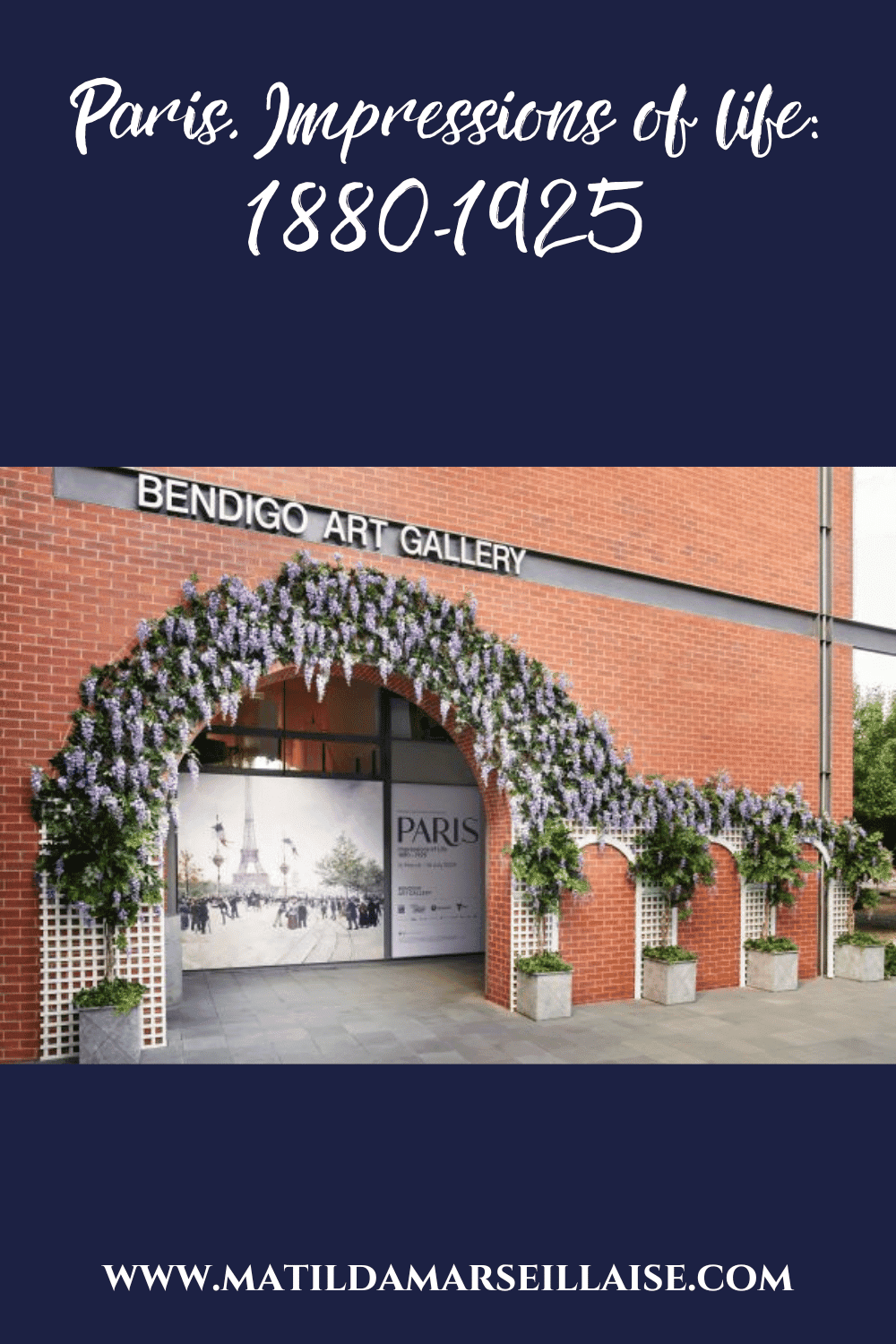The Illuminate Adelaide festival starts this week and French company Tilt is coming with its floral lights to illuminate the streets for City Lights, the free lights program. Tilt is currently in the Royal Botanic Gardens in Melbourne for Lightscape. The company will also set up in Brisbane for Lightscape which is part of Brisbane Festival in August.

We chat with François Fouilhé, one of the founders and Artistic Directors of French company Tilt.
You’re coming to Adelaide for the Illuminate Adelaide festival with the Urban Garden project? Tell us a bit about this project.
So it’s not easy to tell you about it because it’s a joint project organised by the festival, where we’re going to work together on the lighting and the theme of a street. So that’s it. And we’re coming with two types of light structure, one called Herbum Follus and the other called Veilleuse. And then we don’t really know much more about what’s going to happen in the street around us. So we know that it’s going to be colourful, that it’s going to be dynamic, that there’s going to be lots of things happening, but we don’t know exactly what. So that’s it.
So you are in the dark like us.
We are a little less in the dark because we know what we are bringing with us, but we don’t know exactly what the final result of this project will be. But it’s fun.
Are you coming to Adelaide yourself and with a team?
Yes. We are bringing a team of three people to set up. Then there are people who also help us on site for that.
Have you been to Adelaide before?
No. For Adelaide, it is the first time we’ve been there. We’ve been working on this project for a long time to get something going. But every time, it falls through. But we’re really pleased that it worked out this year. But this is our first time in Adelaide.
We know Sydney Melbourne. This year, we’re going almost at the same time, we’re in Melbourne and Brisbane.

I didn’t know about Brisbane. You did VIVID Sydney one year too?
Last year. We are working with the Royal Botanic Garden in Melbourne and then the Brisbane Botanic Garden from August.
How are the installations that you have already done in Sydney and Melbourne in the Botanic Gardens different to those that you are putting on in Adelaide?
First of all, we’re not in the same place at all. In Adelaide, we’re really in the street, in the urban space, so we don’t have the same interpretation of the project. In Adelaide, we’re doing something that’s free, where people can go for a walk. In the botanical gardens, these are projects that generally have to be paid for. As a result, there are several installations that follow, but it’s an itinerary that’s proposed, so it’s really two different projects.
They’re not the same structures, but it’s the same universe. We make large plants and large lamps and it’s the same types of structures that are presented, but they’re not exactly the same.
So you’re not using the same ones in Brisbane and Melbourne this year as you are in Adelaide.
Two different things.
And the image that’s associated with Urban Garden on the Illuminate website is your Herbum Rouge. But you’re coming with another one too.
Yes, there’s another one too, but it’s not in the picture. I don’t know why that is.
I think they just chose a single photo. How long before the lights go up do you come to install them?
Four days, I think. Something like that. It has to be ready by the fourth actually. We arrive, we arrive I think, on 1ᵉʳ July, we install two, three, four and that starts on the fifth.
And how do you go about planning? Have they given you any photos of the street you’re going to set up in?
Yes, we’ve had a few photos and a few plans. Then it’s true that since we’re a long way away, it’s up to them to choose the locations and so on. Because our structures are big, in fact, they’re seven metres high. We don’t know the place. It’s important to have their ideas about this and to understand the difficulty of installing it in this particular street. So they’re in charge of this part – and they’re in charge of all the preparations for this part, in fact.
And the installations you’re going to do in Melbourne and Brisbane are in the botanical gardens of each city. So, is it more flowers?
Yes, it’s more the flowers, it’s the Lili and the Peonies that are there.

Tilt Peonies
And they change colour?
Yes, they change colour.
I imagine that these lights are fragile and weigh a lot. Does that pose any problems for transport? Especially coming so far?
No, it’s not a problem because we transport our lights in containers, which means by boat. However, if we were to travel by plane, that would obviously be a big problem. That’s why we don’t do it.
The most complex thing is that you have to plan for two and a half months to get the equipment to you, which is a long time and to prepare beforehand, and so on.
And especially with the coast near Israel and all that. At the moment, the boats aren’t going there.
They’re going round now, so they don’t go through there any more, so it takes even longer.
So the company is called Tilt. Iis it an anagram? Does each letter mean something?
It’s funny you should ask that question. At one time it did, but it doesn’t anymore. We say ’tilt’ when we have an idea and there’s a light bulb that often appears in comic strips. It’s really that reference. And then what? It’s a simple name that we remember too, that’s why we like it.
Your team has over 20 years’ experience, but how long has Tilt been around? And how and by whom was it founded?
Well, there are two of us here. I’m one of them. And we’ve been together for 22 years.
Did you come from an engineering or artistic background?
No, our backgrounds are more artistic in a way and technical too. We started out as lighting engineers, working on live shows, so we branched out a bit more into installations and lighting design. So for that, we’ve put together a team with lots of different trades so that we can be autonomous and complete when it comes to manufacturing.
So you make them yourself? It’s not that you design them and someone else makes them.
We do almost everything, yes.
You have a collection of 25 types of lights that you offer for temporary installations and on your website it says that they are “inspired by nature or cult elements of everyday life.” Tell us a bit about the creative process.
The creative process is quite special. In general, it’s something that we do with my colleague Jean-Baptiste, we each have a bit of an idea book, we suggest things and then sometimes we push ideas that work and then sometimes we leave them aside. We wait a year or two years and then we come back to them later. It’s really a case of gut feeling, thinking about where to install them too.
For a few years now, we’ve been working more on visions of botanical gardens, because we do a lot of that. So we’re working on lighting that can be more fragile, because people have a different approach. We also work for music festivals, for example, where the lights need to be a bit more robust.
So there you have it, it’s a bit of all that too that inspires us, that’s really part of the creative process. But we’ve got lots of ideas that we’ll come up with at the right moment.
And how long does it normally take from idea to finished product?
About a year.
So that’s why you create a new one every year.
That’s why. That’s what we know, that’s the specifications we set ourselves. In other words, we want to create a new luminaire every year, but it takes that long, in concrete terms.

And how do you decide what you’re going to create? You’re one of the artistic directors. Is there an artistic team and a production team?
Well, in the very beginning, yes, we worked more as a two-person team, but then we quickly brought in the people who make the products to work on manufacturing methods and to find solutions for manufacturing. We also bring in an engineer from outside the company who calculates solidity, weight so that it doesn’t fly off, and things like that. So as soon as we have an idea, we draw it up and then as soon as it’s drawn up, we talk about it to find out how we can make it.
But it happens in two stages actually, like that. In other words, the first part is really more about the idea. And then once Jean-Baptiste and I are happy with the idea, we draw it up and then we get the team involved to find out how we’re going to make it happen.
You mentioned that for music festivals in particular, you need the light to be strong. Illuminate Adelaide and Lightscape in Melbourne and Brisbane take place in winter, but do you normally have your installations in summer or is it always winter or is it a bit of both?
It’s all year round. It’s all year round. We can be in the sun at 45 degrees or at -30 under the snow. We don’t have too many weather constraints in terms of our structures.
That’s handy. On your website, you mention your desire to be efficient and environmentally friendly. Is that why you decided to create lights shaped like things such as plants and flowers, things found in the natural environment?
Well, no, not really. That’s more a source of inspiration for the shapes and then the way of being immersive and making things big so that you feel very small in some way. That’s the side of nature that we like. But after that, the fact that we’re careful and the way we do it isn’t really linked to that.
We tend to work on structures for the long term, which means that when we make something, we make it for the long term. There are lights that we created at the beginning that are still being used 20 years later, and of course LEDs have changed a lot in terms of energy consumption. We are also controlling the amount of time the lights are switched on, i.e. we decide to switch them on for 4 hours in the evening and not all day especially. We’re also cutting back on public lighting so that our structures are better showcased. There are a number of things like that that mean we’re careful not to do just anything and to respect our environment.
Have you created lights that can be powered by the sun?
Well, no, that’s something we’re not really into, because to charge using the sun, you have to store the energy using batteries. And at the moment, I’m not really convinced about batteries. I mean, batteries can’t be completely recycled and they don’t last very long. So it can be practical for some things, but in environmental terms, it’s not great actually.
So we think it’s good, but in fact it’s not as good as we think. So if your installations don’t have a battery, in other words they have a plug?
Yes, they’re with a plug all the time. So that means we plug in for 4 hours in the evening and unplug when it’s finished. And that’s it.
Was the decision to make the lights in-house rather than having them made elsewhere to give you more freedom over what you do?
Yes, completely. And it’s something we like to control. We’ve surrounded ourselves with a team of builders as well. So the model here is one where we decide to design and go right through to the end of manufacture and even installation, because even the installations are done by us too. It’s specific. So all this allows us to control our work from A to Z, in fact. That’s why we do it that way too.
And you use local suppliers as much as possible for the components you make. Is it difficult to find local suppliers?
No, it’s not difficult because we live in a region where there’s quite a lot of industry. And we don’t have many external requirements either. The things we don’t do ourselves are all plastics, for example, and there’s a company that does that, which is ten kilometres from where we live and with which we work to ask for tests or things like that. So it’s practical because we don’t have to go all the way across France to see a test or something like that. We can simply work with people by saying “Well, I’ll come and have a look” or “Here, I’ll show you something” and then we try it out and it works or doesn’t work.
It’s also being close to people that saves time and makes us more efficient. We have a metal laser cutter 500 metres from our house. So it’s very practical, in fact, for when we have something cut out, the person delivers it to us within the day.
I think that if you’d wanted to do this in Australia, it would be very difficult. There are a lot of factories that don’t do it here any more. And we buy a lot of products from China.
So do we. Don’t worry.
So it’s good that there are still factories and even more close to home.
Yes, they’re people who transform, in other words who take the raw materials and transform them. But yes, there are still factories here.

That’s great. Why should people come and see the Urban Garden at Illuminate Adelaide?
Because it’s going to be amazing. That’s pretty sure. But not knowing the project, I don’t really know what to tell you. It’s a great festival. In any case, I think you should come and see. We’re curious. You have to come and see it for yourelf.
And how did you come to be part of the festival? Did they discover you? Did you apply?
They discovered us several years ago and we’ve been trying to do things for a while now, and now, it’s working. But it’s not easy. It’s a long way away. So you have to imagine that when you come from France, moving equipment like that, moving teams, major costs and for a festival, it’s not easy either. So it’s taken several years for this to happen.
And you’re coming to Lightscape in Brisbane and Melbourne too? I believe it was under the same name that you presented in Sydney?
Yes, it was the same name in Sydney. In fact, Lightscape is a night-time tour of installations in the Botanic Gardens.
Ah, that’s what it’s about. Is there anything else you’d like to say?
No jus that we’re very happy to come, in any case, because if the weather’s good, we’ll be happy too.
—
We thank François Fouilhé for this interview and can’t wait to see Tilt’s lights.

KEY INFO FOR TILT’S LIGHTS IN AUSTRALIA
City Lights
5 – 21 July
FREE
Lightscape
29 August– 12 October 2024
Ticket prices range from $24 to $46
Lightscape
14 June – 4 August 2024
Ticket prices vary depending on the day and time chosen:
- Adult $36 – $40
- Children 4 to 12 $28 – $32
- Family of 4 (minimum 2 children aged 4-12) $128 – $144
Have you already seen Tilt’s lights?
MORE ILLUMINATE ADELAIDE CONTENT
Gallic and maple leaf magic coming to Illuminate Adelaide 2024
Want to see Renaissance paintings come to life? With Grand Mix at Illuminate Adelaide you can!
Discover events with links to France and the Francophonie happening in Australia this month in our What’s on in July






